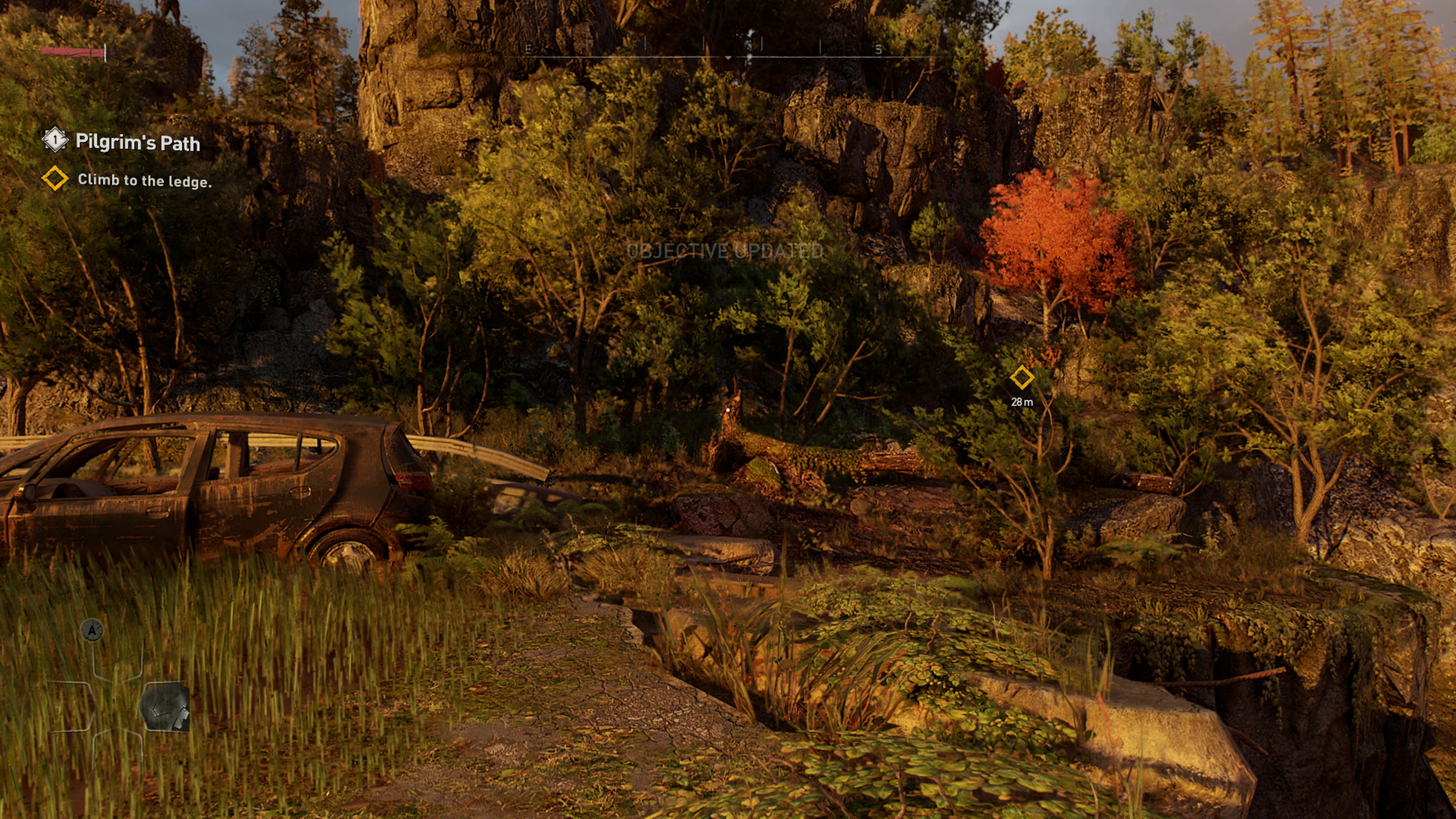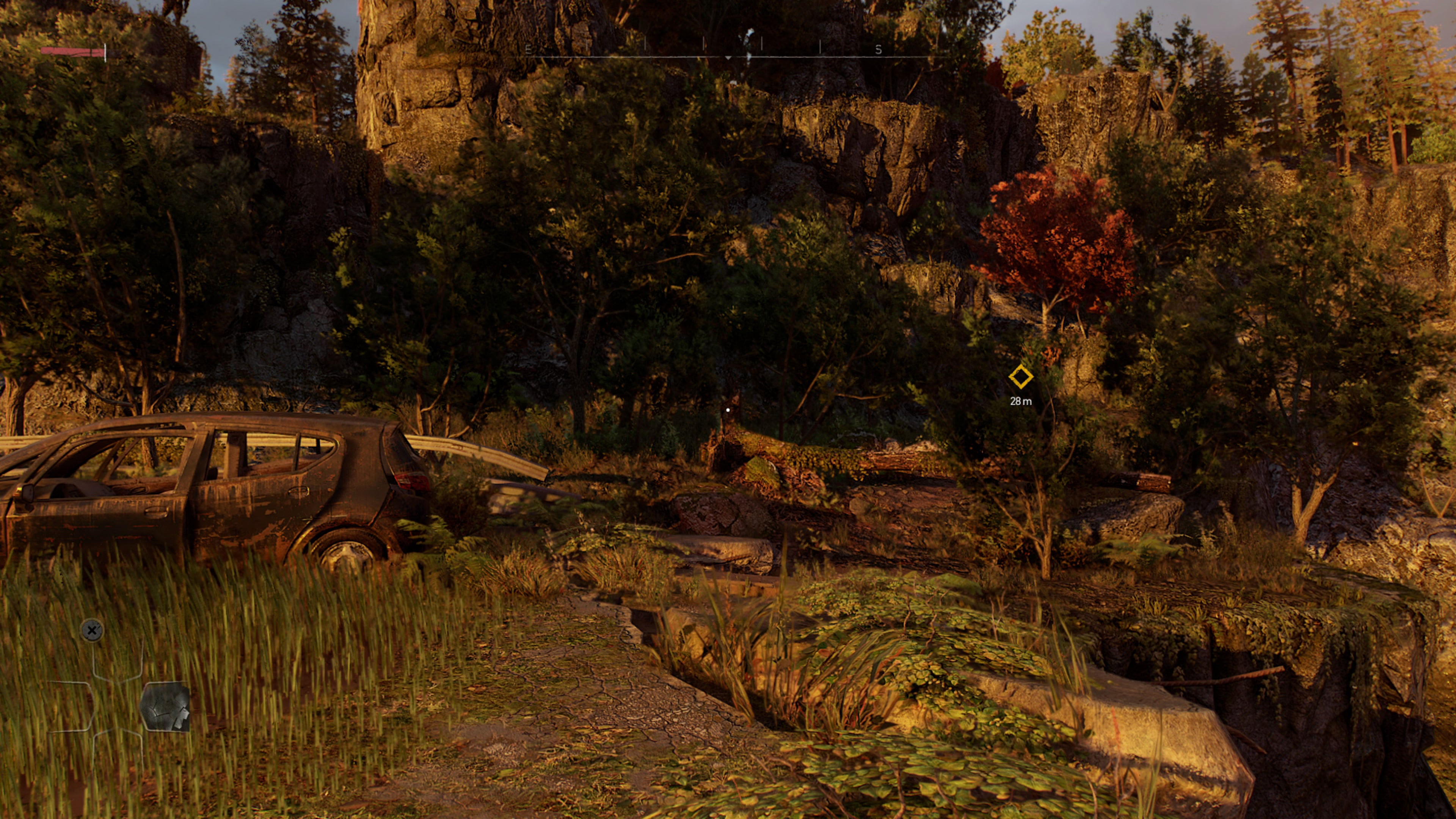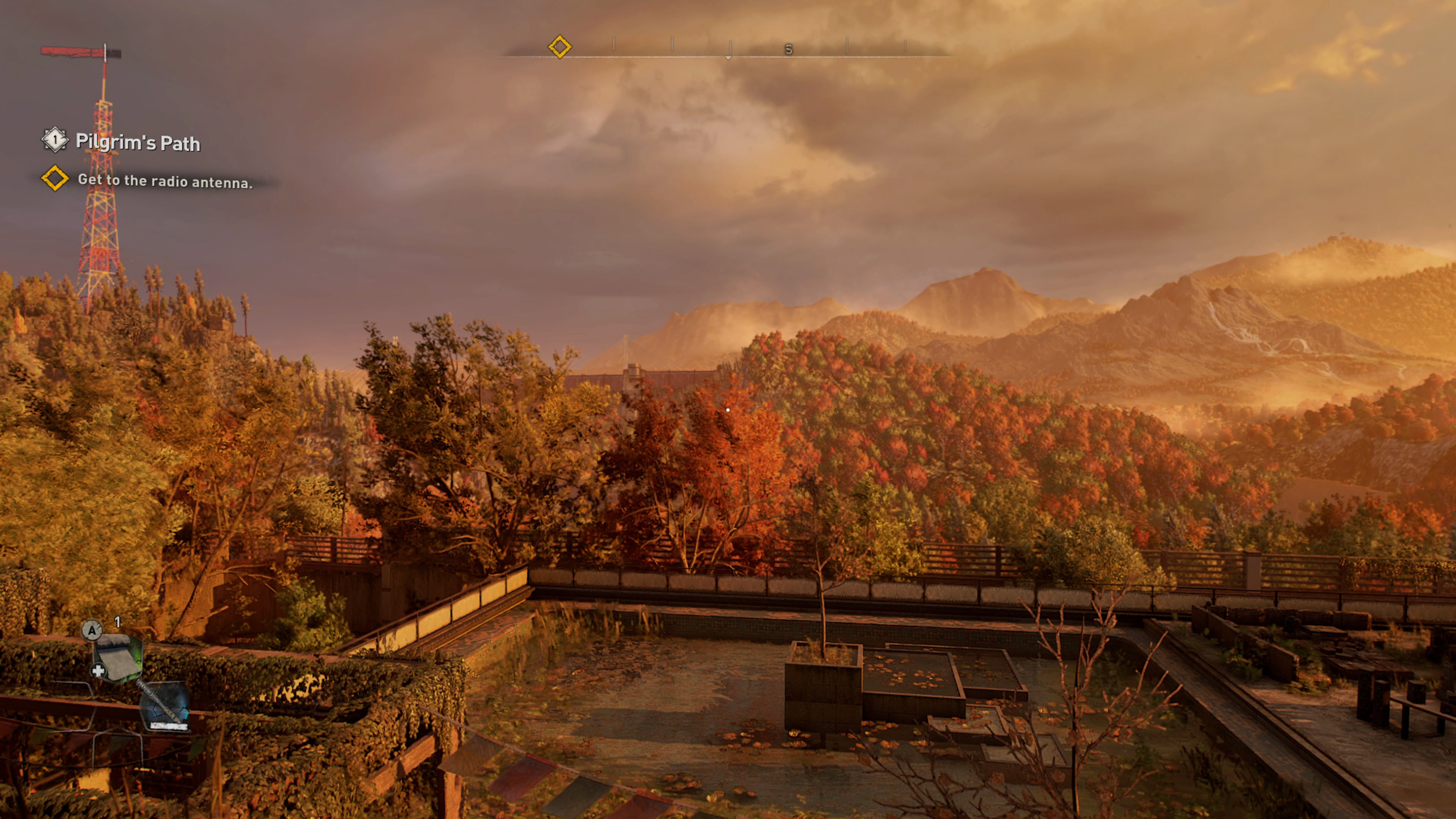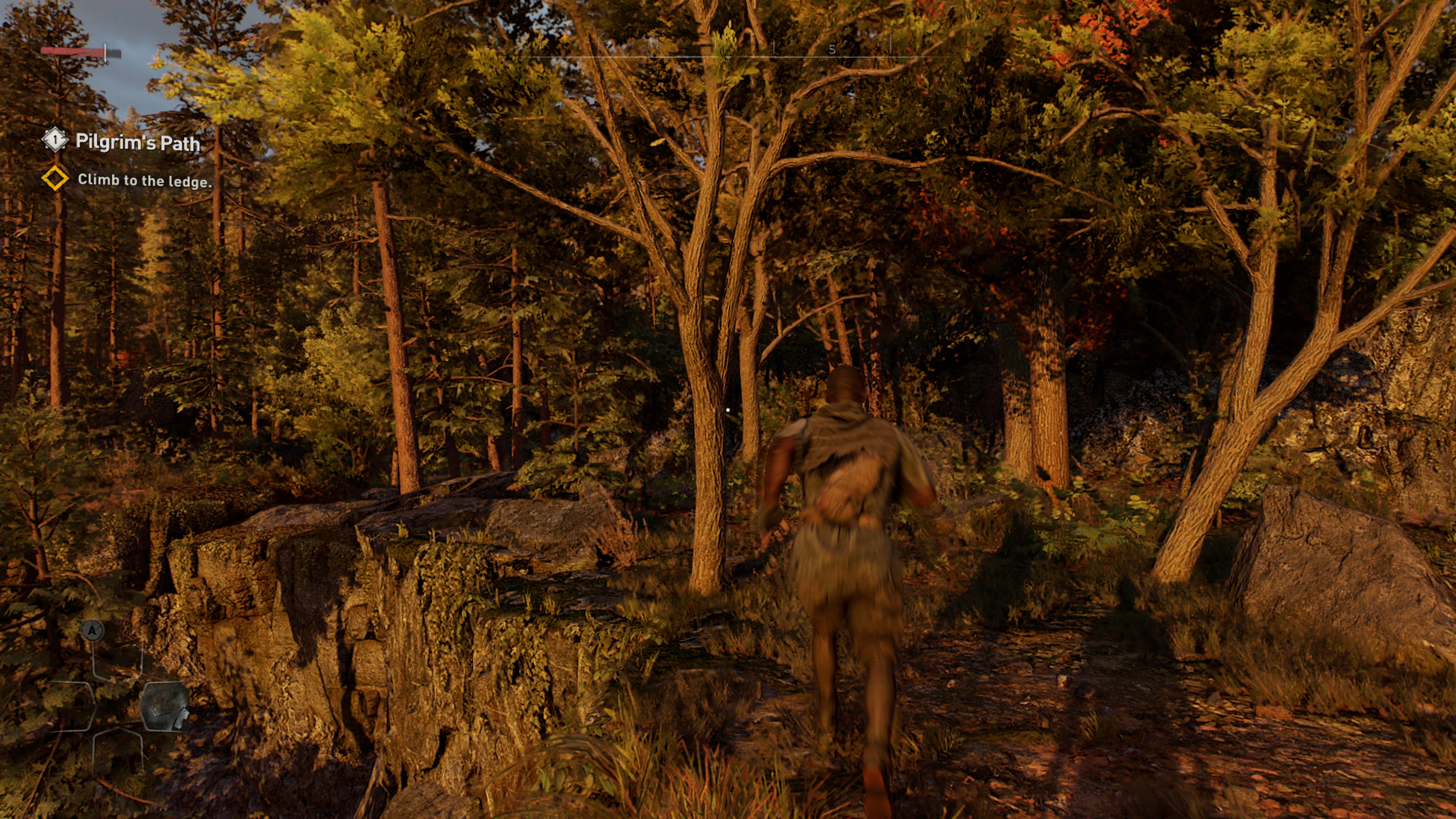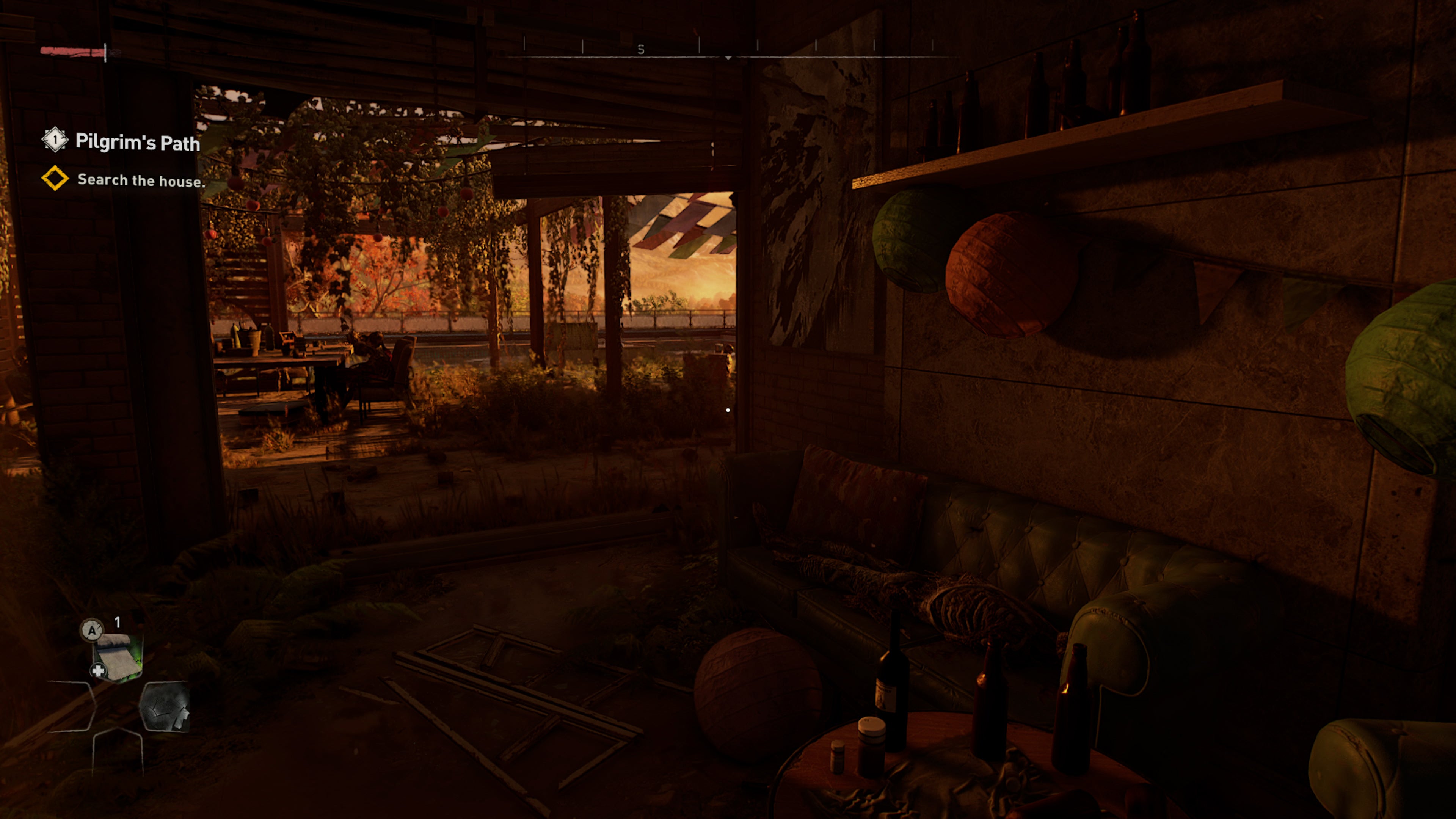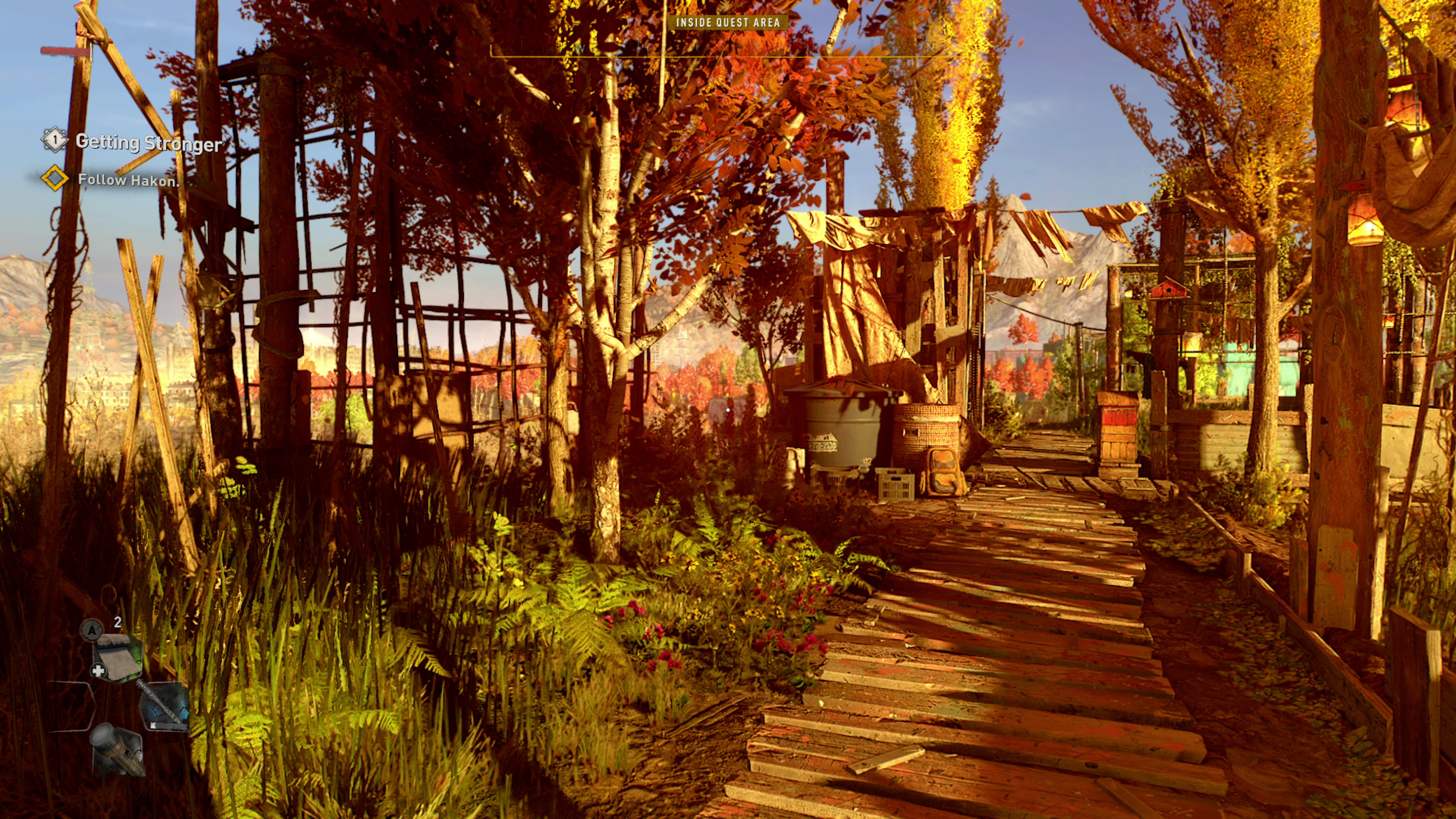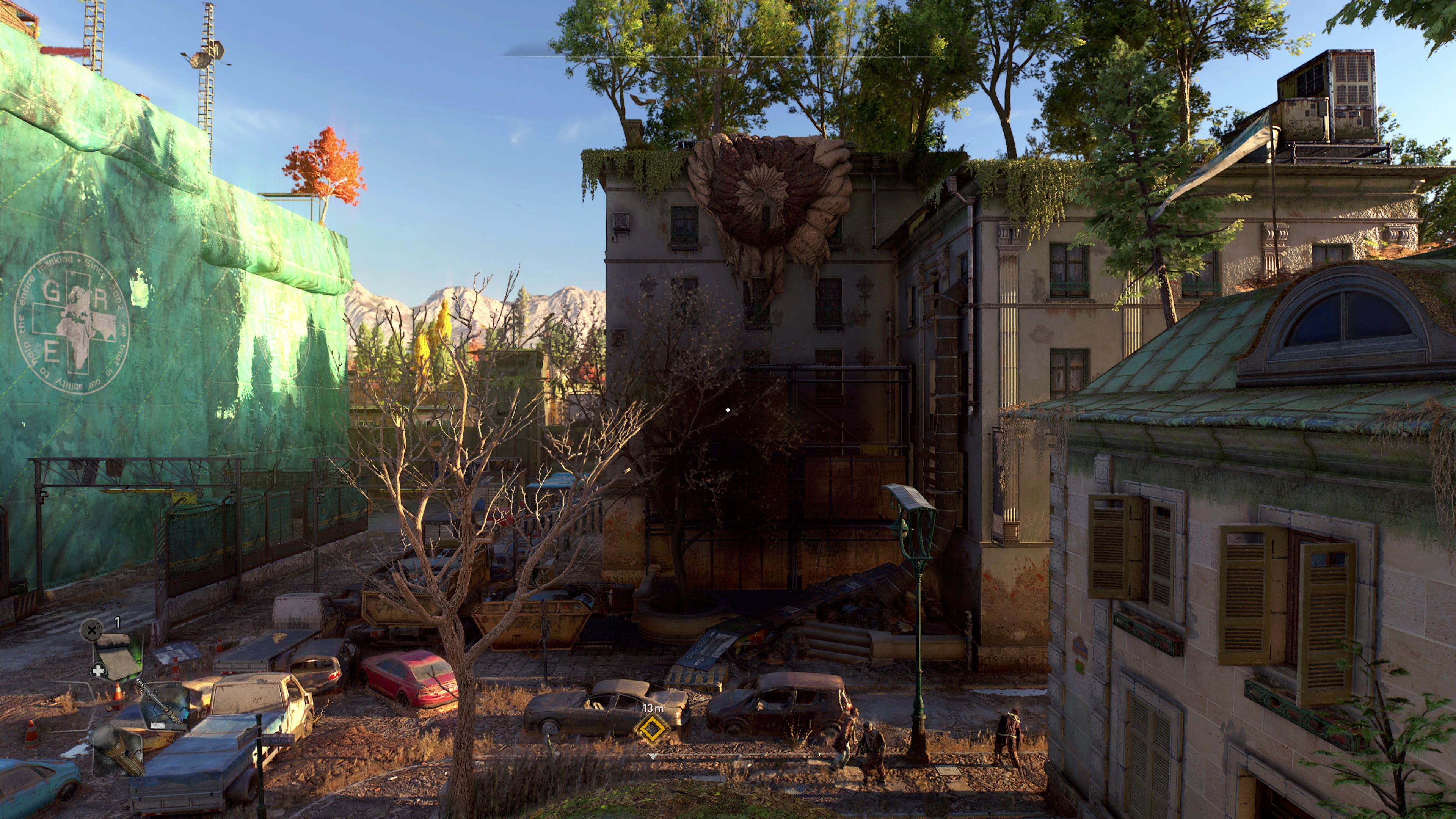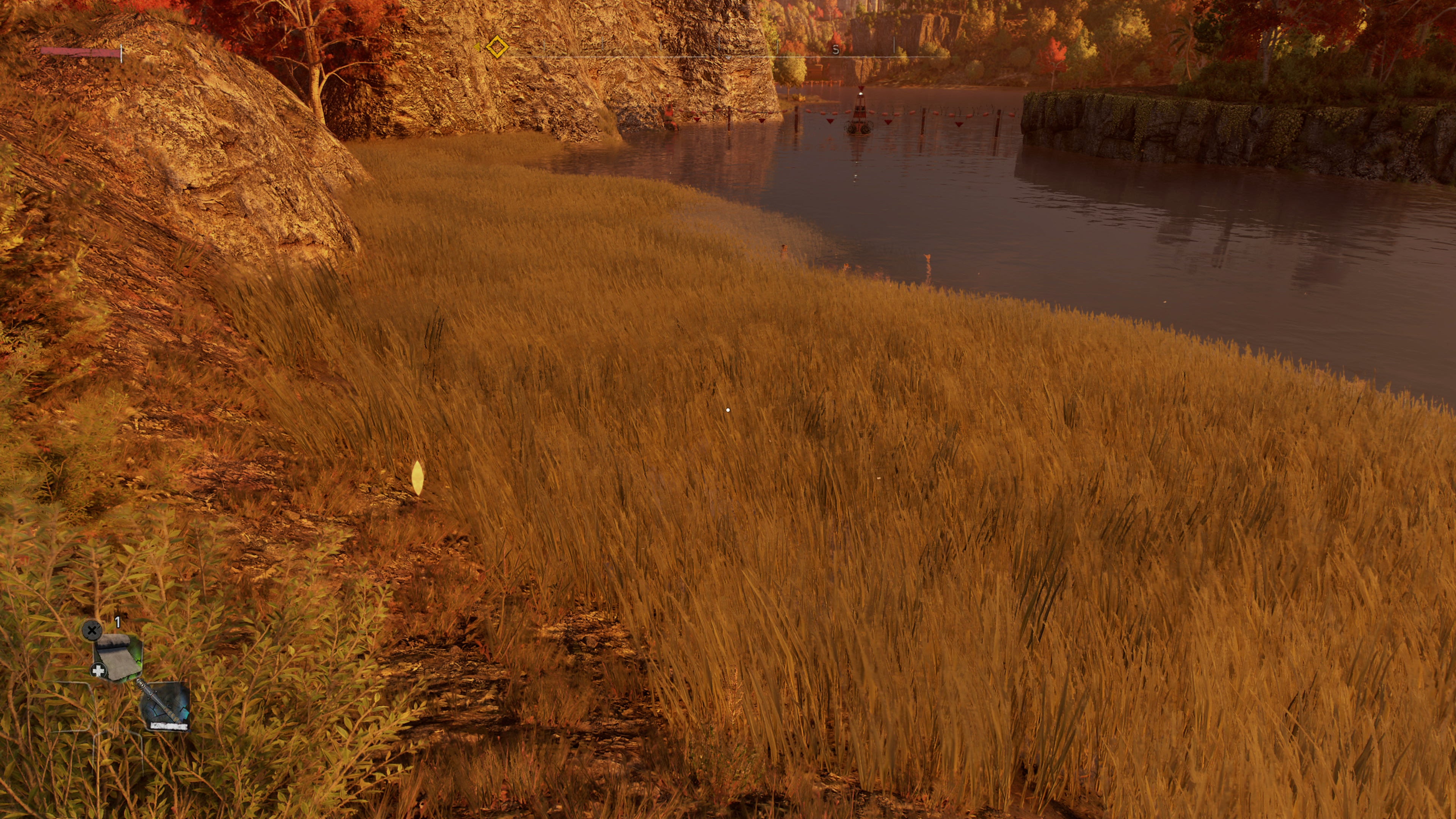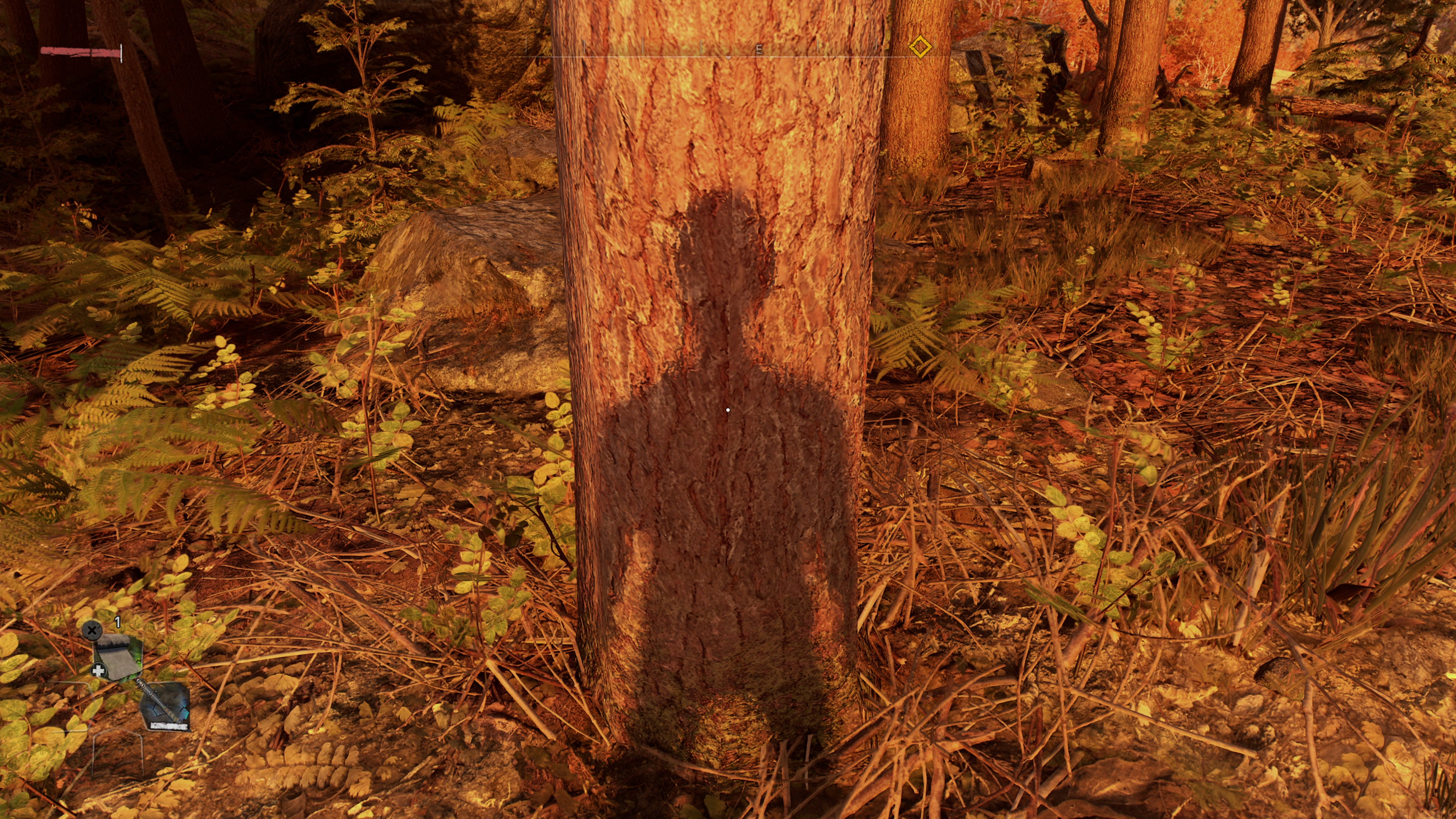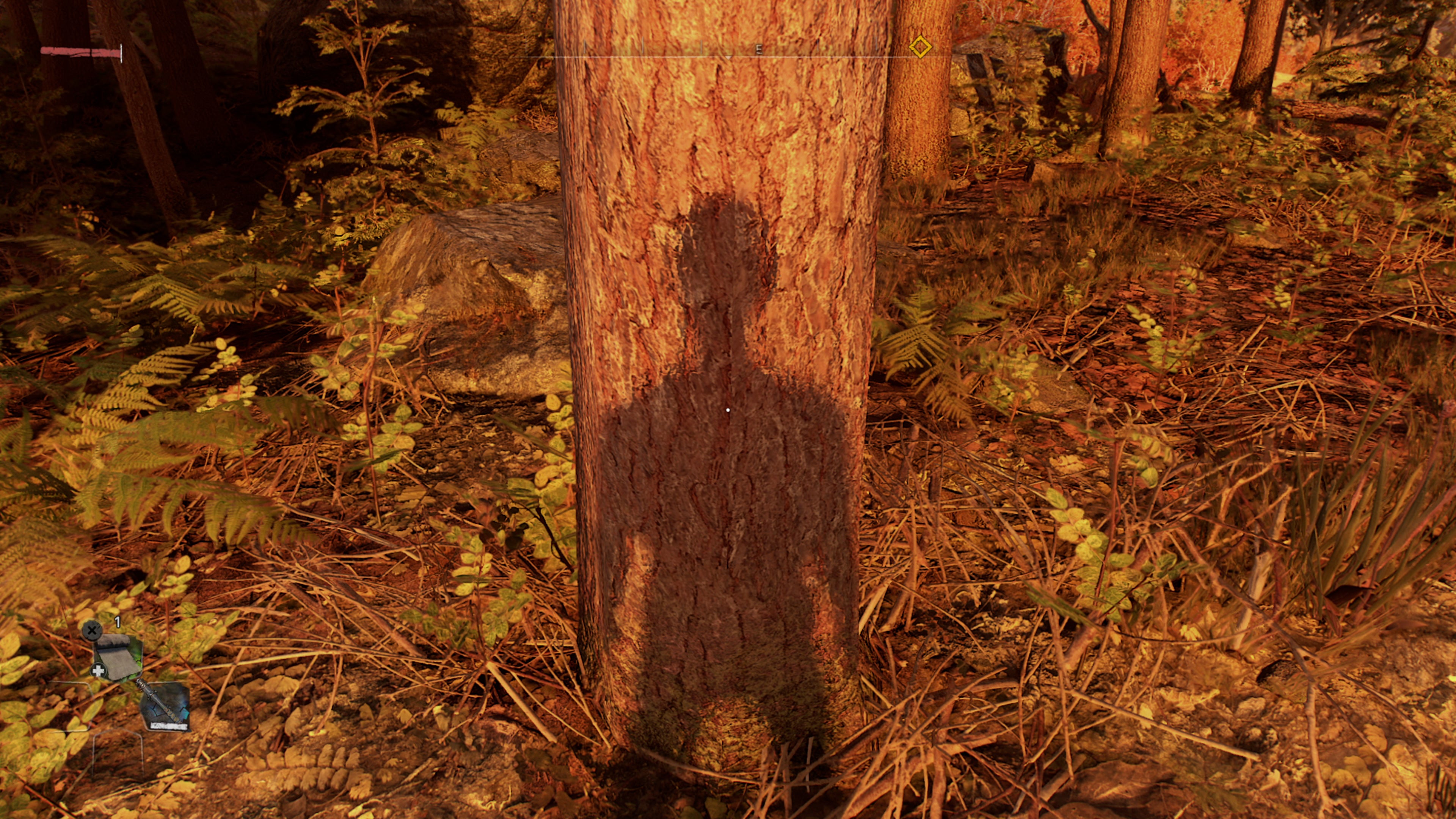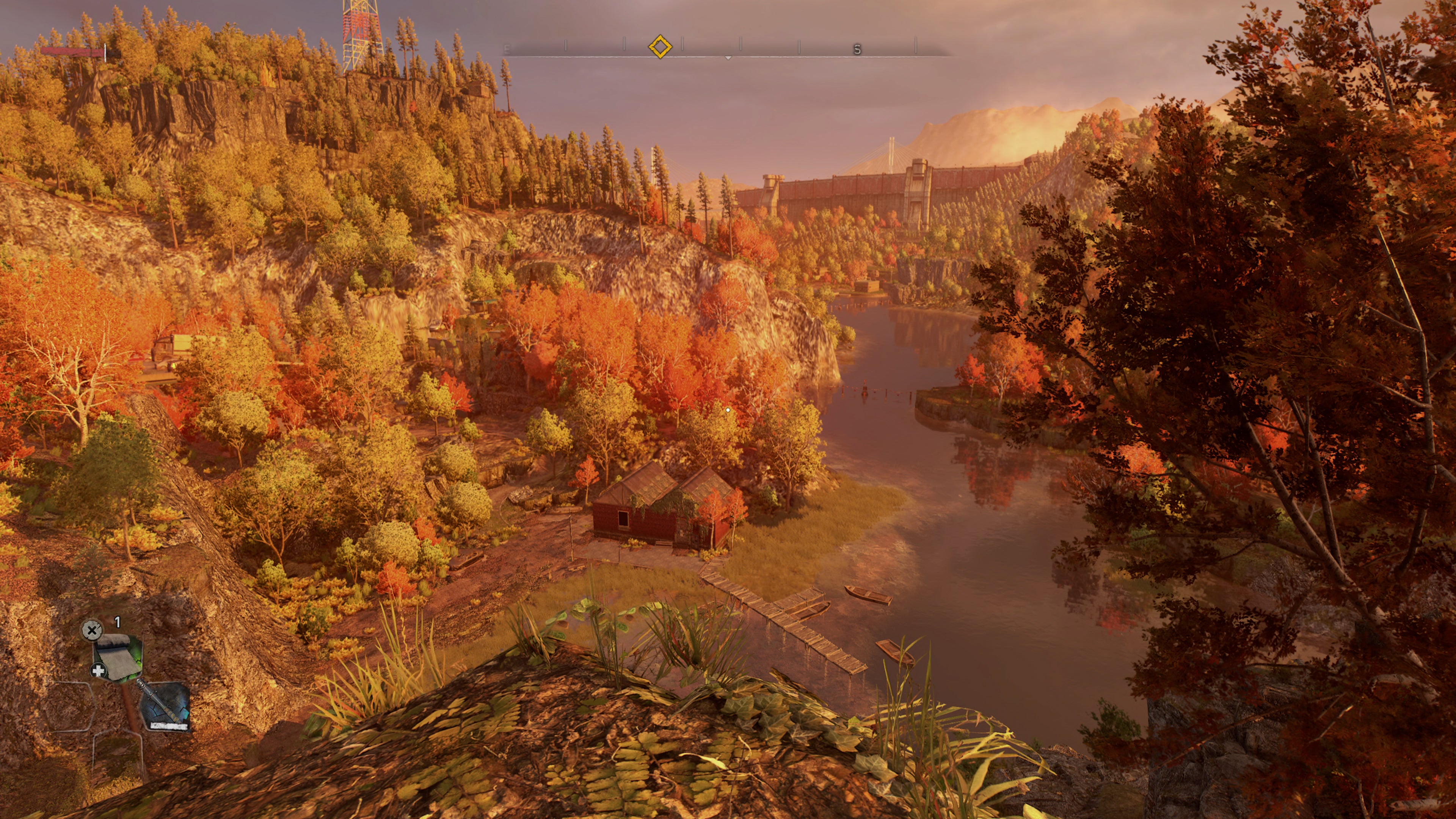Three different rendering modes are on offer on PS5 and Series X consoles, all of them delivering something desirable - but the horsepower simply isn’t there to offer them all in combination. For that, you’ll need a high-end PC (where Dying Light 2 offers even more visual features) and we’ll be talking about that in our next piece. Right now the question is simple: how do PlayStation 5 and Xbox Series consoles run the game? Are 30fps and 60fps modes best for play - or should you push higher for the ray tracing features? Without question, Dying Light 2 looks great on all three current-gen systems. Woodland areas flow beautifully with rare signs of performance drops. Even on Series S, animations, texture quality, and lighting compare favourably to PS5 and Series X - the big downside being in resolution and frame-rate. To get the bad news out of the way first, the multiple rendering modes are not present on Series S, which is fixed to a native 1080p at 30 frames per second (and to be clear, the 30fps target is also set for the last-gen machines too - we’ll be looking at those versions in the next couple of days). No ray-tracing features are included on Series S either. It’s with PS5 and Series X where things get a little more interesting. As standard, both machines boot in performance mode where rendering resolution is locked to 1080p, while frame-rate targets - and doggedly locks - to 60 frames per second. The sheer consistency of this mode is laudable, especially as Techland does not lean into dynamic resolution scaling to achieve this lock. However, the combination of the relatively low resolution and the temporal anti-aliasing solution ensure that presentation is definitely soft. Even so, the improved performance brings out the best in the sense of weight and movement in the game’s parkour segments. Input lag will be lower too. There are reports of a variable refresh rate mode exclusive to Series X that unlocks the frame-rate on 120Hz screens but unfortunately, this was not functioning during the review period. It should be available soon and we’ll report back on how well it functions. Next up, there’s the resolution mode which dramatically increases clarity in the image, thanks to a bump to 3200x1800 on PlayStation 5, rising to 3456x1944 on Xbox Series X. That’s a 16.6 percent increase in pixel-count for Series X, just slightly beneath the compute differential between the two consoles’ GPUs. It is an advantage for the Microsoft machine, but a limited one in practical terms - a touch of extra clarity is delivered, especially on transparent elements, but in truth, it’s hard to tell the difference side-by-side. You are effectively getting a fully locked 30fps in this mode, however, with only very, very minor dips beneath this with isolated effects (such as jumping into water). In this respect, PS5 and Series X run in a very similar way. Series S? Think of its single 30fps mode as a slightly less stable version - still very consistent, but a little more prone to screen-tearing. Lastly then, we have the quality mode, which retains the 30fps of the resolution offering, combined with a 1080p resolution. The leftover GPU horsepower is instead funnelled into ray-traced shadows and ambient occlusion, adding significantly more depth and realism in outdoor scenes especially. Plant-life is transformed with an extra layer of shade. With ray-traced shadows enabled, character shadows also logically become more diffuse, the further away they get from the light source. Performance on both PS5 and Series X sticks unerringly to 30 frames per second on this mode, too. The effects can be transformative then, but the trades to both resolution and performance are steep. It’s hard to definitively say which mode is worth picking: I spent most of my play through on performance since 60fps matters most to me, but the ray-traced shadows and ambient occlusion are a genuine highlight on console. In review, PS5 and Xbox Series X owners get a real luxury of options in Dying Light 2: ray traced shadows, 60fps and 4K support are all worth checking out. However, it’s a shame that all three modes have stand-out features, with such a trade-off attached in every case. To get them all - with even more graphics upgrades - Dying Light 2 demands a high-end PC with an RTX card (yes, DLSS is also a crucial enabler). Still, the choice Techland offers is a strong vote of support for the new generation of hardware at least, putting all options in players’ hands - though Series S users get very little beyond the core game at 1080p and 30fps. The biggest revelation for me is just how effective ray-traced shadows are in the right time and place. Dying Light 2 creates plenty of opportune moments to showcase it, even from the start with its low-cast sun streaking shadows across woods. It’s a huge upgrade next to the other modes, and worth considering for anyone jumping into Dying Light 2 afresh this week. Others may find it hard not to play at 60fps - but at least users get the choice. There’s still much to share with Dying Light 2. We aim to deliver our PC coverage next, covering off the stunning range of graphics features, performance analysis across a range of hardware and - of course - optimised settings. Beyond that, we’ll also be taking a look at how this graphically intensive title fares on the last-gen machines (spoilers: expect reduced visual settings, varying resolution levels and a 30fps cap) and to see whether a ’next-gen’ game scales better to older hardware than, say, Cyberpunk 2077. So there’s still a lot to come, but right now? We can wholeheartedly recommend the current-gen versions of the game - just as long as Series S owners are aware that their options are somewhat more limited.
